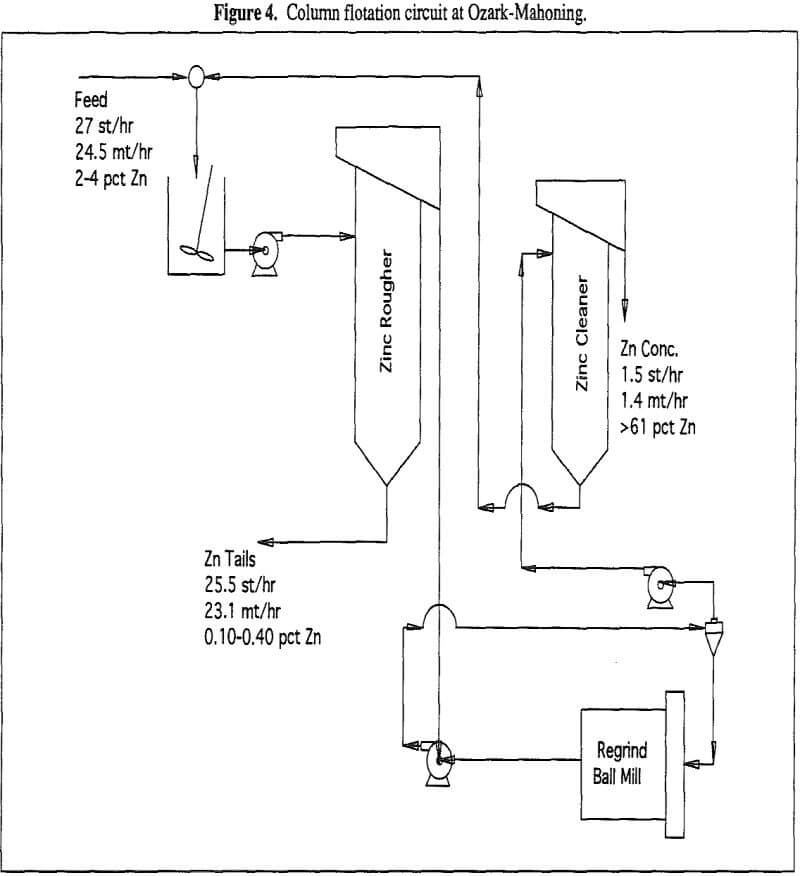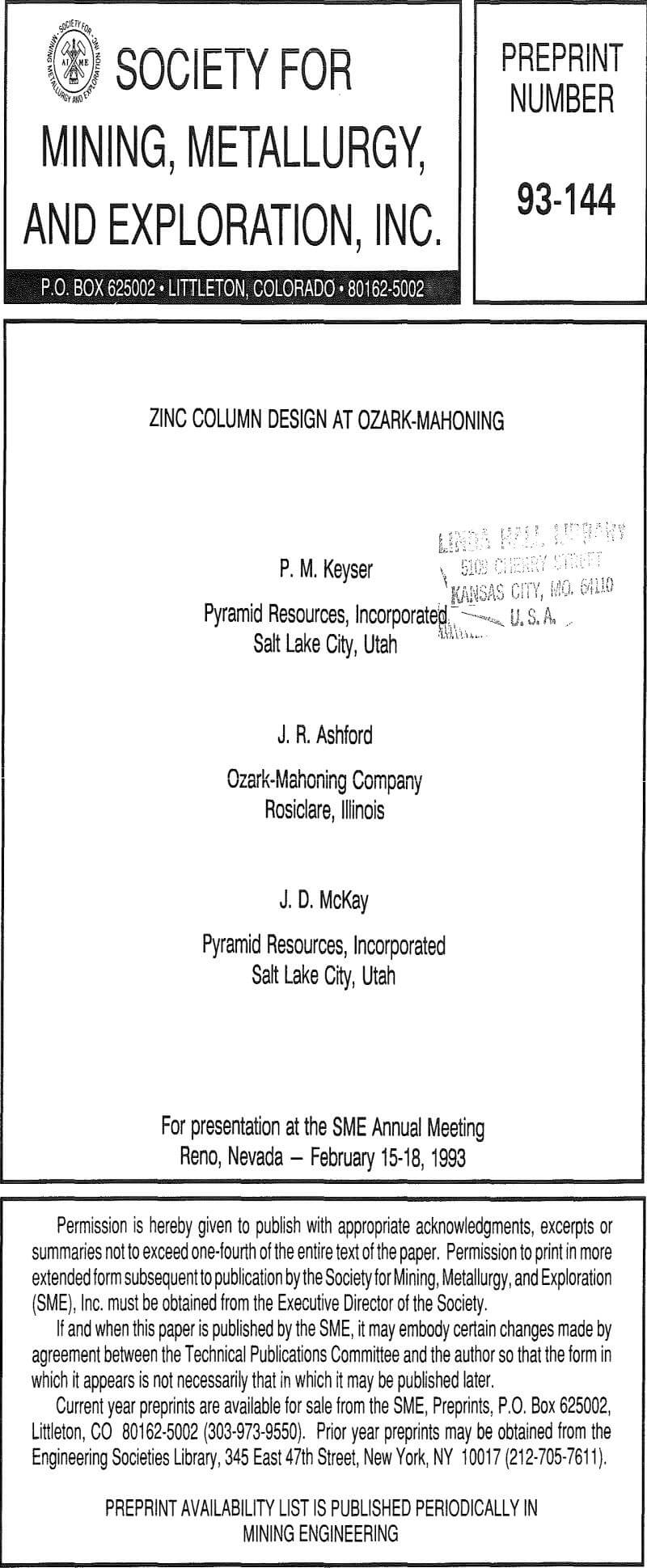Figure 1 shows the flowsheet for the conventional flotation circuit at Ozark-Mahoning. The plant processes 24.5 mt of ore/hr (27 st/hr) with an average particle size of 60 percent less than 45 µm (325 mesh).
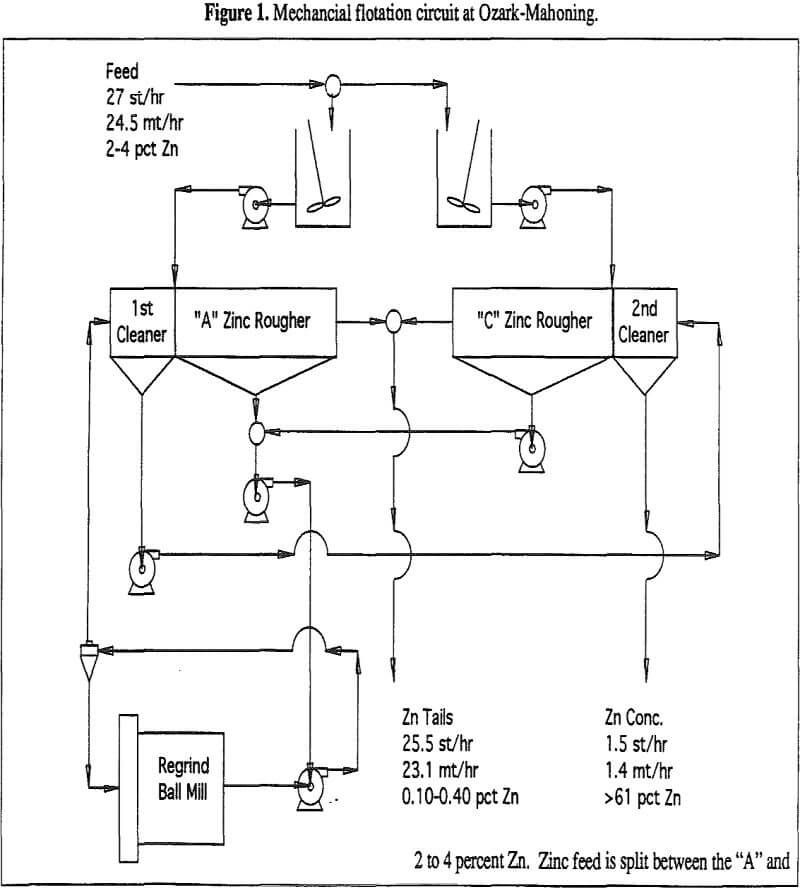
Pilot Testing
Apparatus and Procedure
The controller input was a signal from a level sensor that measures the slurry/froth interface. The controller then adjusted the output on the tailings control valve to maintain the pulp level setpoint. Sparger air and water flow rate and pressure were controlled manually via pressure regulators and analog flowmeters. Wash water flow was also controlled manually with a gate valve and analog flowmeter.
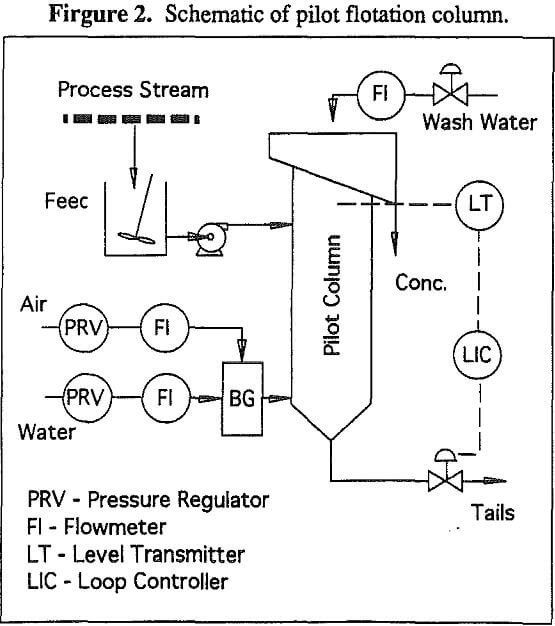
Pilot column tests were performed on sample obtained by diverting a portion of the plant process stream. For rougher flotation tests, reagents were conditioned before feeding the pilot column. No additional chemicals were added to the cleaner feed stream. Tests were run for a period of three times the mean retention time for each set of conditions to insure steady state operation of the unit Samples of column feed, concentrate and tailings were assayed for zinc. For cleaning tests, fluorine content of the concentrate was also measured
Rougher Pilot Testing
Zinc rougher testing had the objective of quantifying the benefits of column flotation while achieving metallurgical results equal to that of the existing mechanical rougher/scavenger flotation circuit. Consequently, a study was conducted to find optimum values of column scale-up parameters. Initially, reagent dosages were equal to conventional circuit values.
The response variables are zinc concentrate grade, zinc tailings grade and zinc recovery. Plus signs indicate positive effects while minus signs denote negative effects. Zeros mean that the factor did not significantly affect the response variable. As shown, increasing xanthate dosage increased the zinc concentrate grade with no effect on zinc tailings grade or recovery. Higher copper sulfate levels increased recovery and decreased percent zinc in the tailings. Finally, increasing frother dosage in the feed increases zinc recovery.
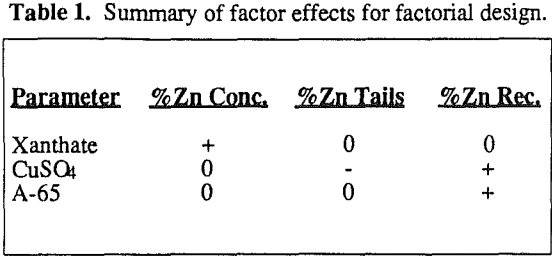
Cleaner Pilot Testing
Column testing for the zinc cleaner application followed a similar approach to that of the rougher. However, since additional reagents were not added to this steam, the objective of the testing was to determine the values for optimum design and operating parameters.
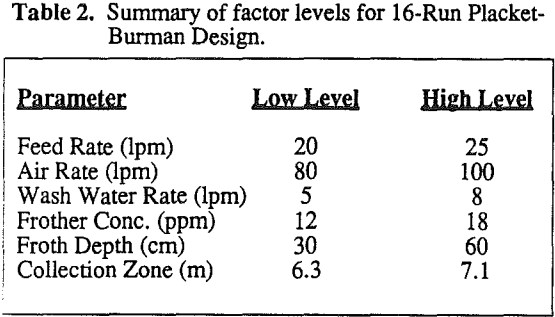
Table 3 shows the effect of varying parameters on zinc concentrate grade, zinc recovery and fluorine content in the concentrate. By matching a parameter with a response, the relative effect can be determined. As stated previously, plus signs, negative signs, and zeros denote positive, negative and insignificant effects, respectively.
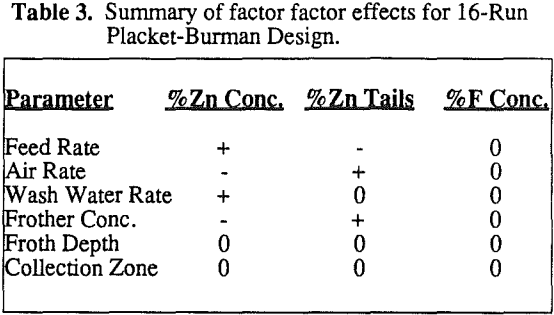
In a last series of pilot tests, cleaner column performance was verified. Results gave an average zinc concentrate grade of 62.6 percent Zn, recovery of 95.3 percent and a fluorine content of less than 0.40 percent.
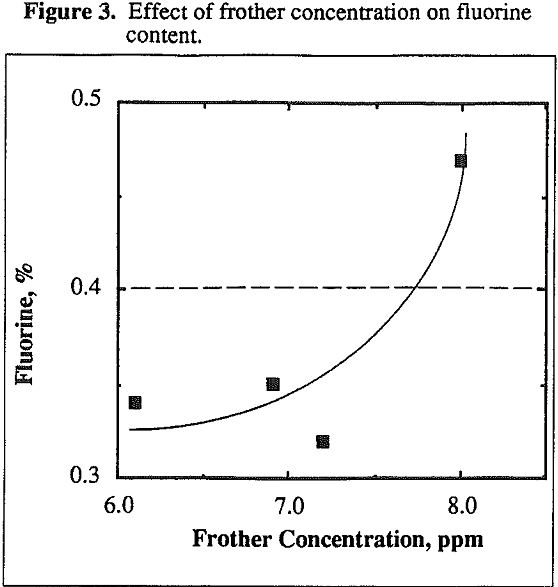
Proposed Column Circuit
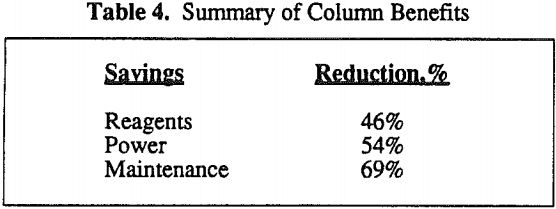
In order to justify the capital expenditure to replace the existing mechanical flotation circuit with columns, the benefits of column flotation were estimated. These included reagent, power and maintenance savings. Column flotation was able to achieve substantial reductions in operating costs as compared to mechanical flotation. Table 4 gives the percent reduction in each of these areas.
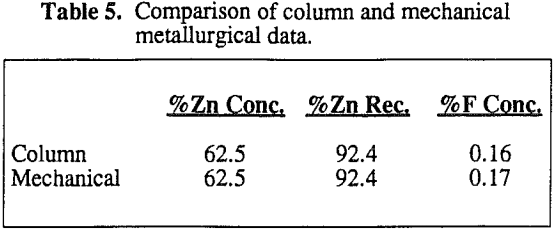
Besides metallurgical results, savings estimated during pilot testing were compared to column production data. Savings estimated from the pilot were about 10 percent higher than the savings documented from production data. The variance comes from two sources. First, zinc grade has essentially doubled from the time of pilot testing to production start-up. This has led to higher reagent consumption (per mt of ore processed). Second, a larger air compressor was selected for production than was initially sized. Therefore, power consumption has been greater than anticipated.
